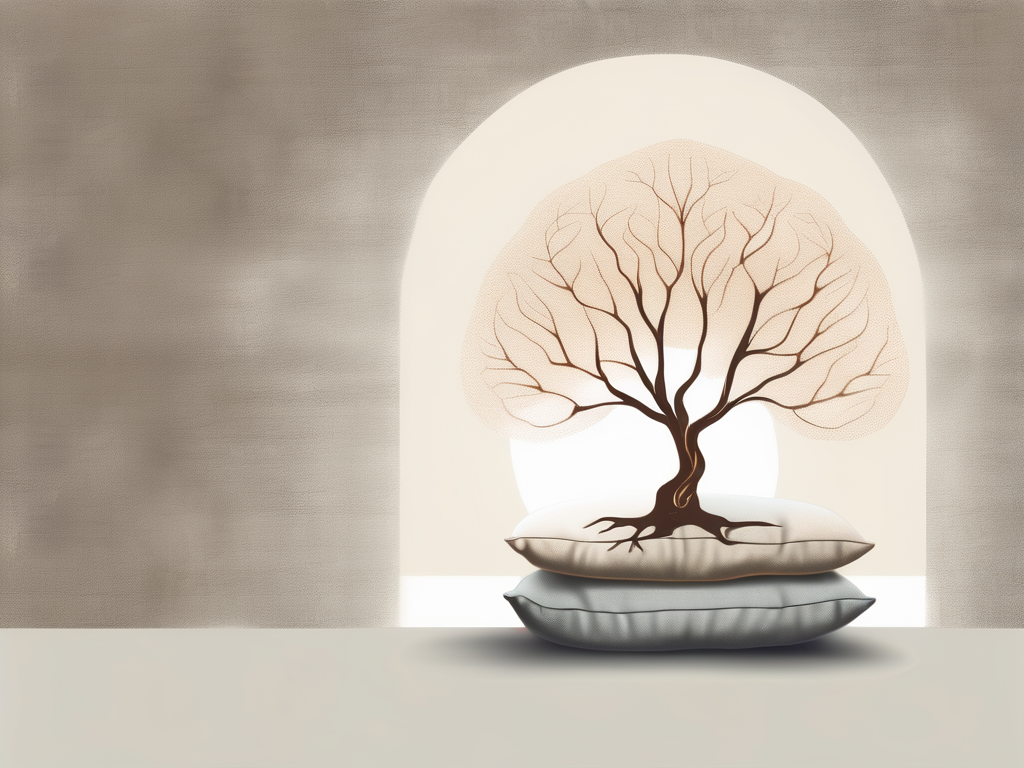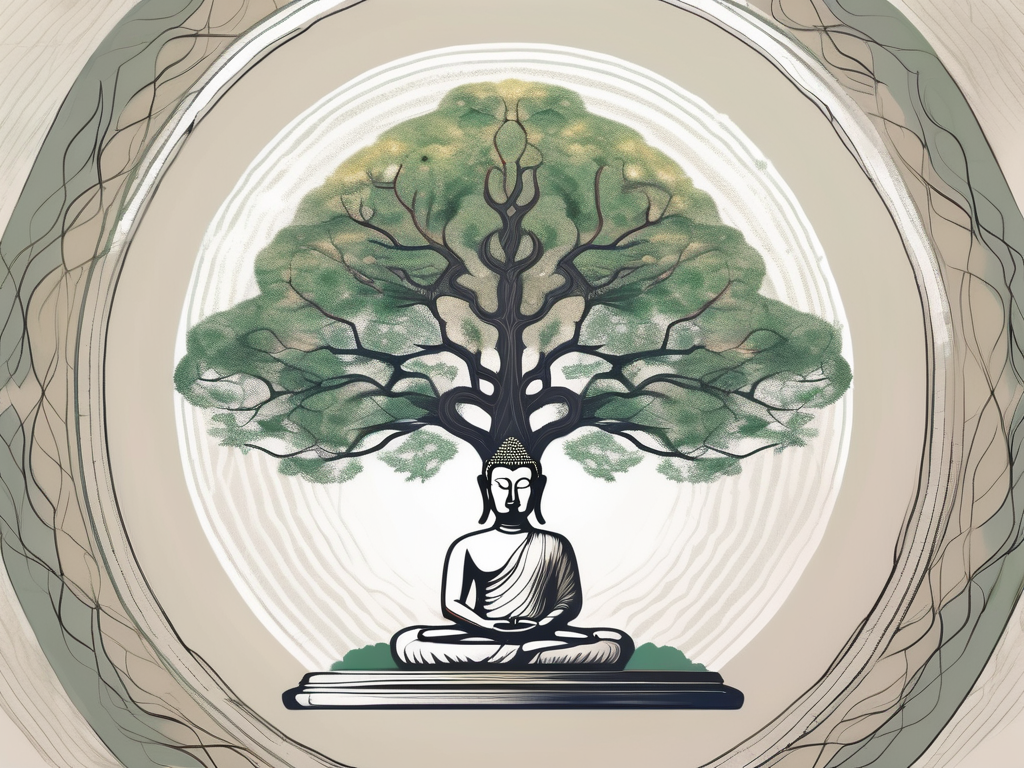In this article, we will explore the fascinating teachings of the Buddha, the historical figure who laid the foundation of Buddhism. From his remarkable life journey to his profound wisdom, we will dive deep into the core principles that form the essence of this ancient spiritual tradition.
Understanding the Life of Buddha
Before we delve into the teachings themselves, let’s first gain insight into the life of Siddhartha Gautama, who would later become known as the Buddha. Born in the 6th century BCE in a region that is now part of Nepal, Siddhartha lived a life of luxury as a prince. However, he became disheartened by the suffering he witnessed around him, and he sought answers to the profound questions of human existence.
The Birth and Early Life of Buddha
Siddhartha Gautama’s birth was accompanied by auspicious signs and prophecies foretelling his great destiny. His father, King Suddhodana, showered him with every luxury in an attempt to shield him from the harsh realities of life. Raised in opulence, Siddhartha was shielded from the hardships that plagued the lives of ordinary people.
As a child, Siddhartha displayed remarkable intelligence and compassion. He was deeply curious about the world around him and often pondered the meaning of life. Despite his privileged upbringing, he showed a genuine concern for the suffering of others, even at a young age.
As he grew older, Siddhartha became increasingly aware of the impermanence and transitory nature of life. He observed the inevitable cycle of birth, aging, illness, and death, which left a profound impact on his young mind. These experiences planted the seeds of his future spiritual journey.
The Renunciation: Siddhartha’s Quest for Truth
Yet, as he reached adulthood, Siddhartha felt a pull toward seeking the truth about suffering, aging, illness, and death. Leaving behind his princely life and his wife and son, he embarked on a spiritual journey to discover the ultimate meaning of existence.
For six years, Siddhartha wandered as an ascetic, practicing extreme self-denial and austerity. He sought guidance from renowned spiritual teachers and engaged in intense meditation and self-reflection. However, despite his efforts, he still felt a deep sense of dissatisfaction and a yearning for something more.
Realizing that extreme asceticism was not the path to enlightenment, Siddhartha abandoned his self-mortification practices and adopted a more balanced approach. He began to focus on meditation, mindfulness, and the cultivation of wisdom.
The Enlightenment: Buddha’s Journey to Understanding
After years of rigorous spiritual practice and seeking guidance from various teachers, Siddhartha reached a pivotal moment. Sitting under the famous Bodhi tree, he entered a deep state of meditation, vowing not to rise until he had found enlightenment.
It was during this profound meditation that Siddhartha transcended the limitations of the human mind and achieved enlightenment. He gained profound insights into the nature of suffering and the causes that perpetuate it. From that moment forward, he became known as the Buddha, which means “the enlightened one.”
The Buddha’s enlightenment experience was not merely an intellectual understanding of the nature of reality; it was a direct experiential realization that transformed his entire being. He attained a state of perfect peace, wisdom, and compassion, free from all delusions and attachments.
The Final Years and Death of Buddha
Following his enlightenment, the Buddha dedicated the remaining years of his life to sharing his wisdom and guiding others on the path to liberation. He traveled extensively, teaching and establishing monastic communities. Despite old age and declining health, the Buddha continued to inspire countless individuals, spreading his message of compassion and wisdom.
Throughout his teachings, the Buddha emphasized the importance of ethical conduct, meditation, and the cultivation of wisdom as the means to overcome suffering and attain liberation. He taught that liberation was not dependent on external factors or the intervention of a higher power but was a result of one’s own efforts and understanding.
After a long and impactful life, the Buddha ultimately passed away at the age of eighty in a town called Kushinagar. His final words urged his disciples to be their own refuge, emphasizing the importance of self-reliance and personal responsibility on the spiritual journey.
The Buddha’s death marked the end of an era, but his teachings continue to resonate with millions of people around the world. His profound insights into the nature of existence and the path to liberation have had a lasting impact on the course of human history.
Core Teachings of Buddha
Now, let’s explore the core teachings that the Buddha shared during his lifetime. These principles encompass the fundamental values and practices that can guide individuals towards spiritual awakening and liberation from suffering.
The Buddha’s teachings are vast and profound, offering a comprehensive understanding of the nature of existence and the path to enlightenment. Let’s delve deeper into some of the key teachings that form the bedrock of Buddhism.
The Four Noble Truths
The Four Noble Truths lie at the heart of the Buddha’s teachings. They are the foundation upon which all other teachings are built. The first truth acknowledges the existence of suffering. It recognizes that suffering is an inherent part of human existence, encompassing physical pain, emotional turmoil, and the unsatisfactory nature of worldly experiences.
The second truth identifies the causes of suffering, which are rooted in craving and ignorance. Craving, or attachment, refers to our relentless desire for pleasure, possessions, and worldly achievements. Ignorance, on the other hand, refers to our lack of understanding of the true nature of reality and our own selves.
The third truth reveals that there is a way to extinguish suffering. It offers hope and liberation by proclaiming that suffering can be overcome and that there is a path to ultimate freedom.
The fourth truth outlines the Noble Eightfold Path, which leads to the cessation of suffering. This path consists of eight interconnected factors that include right understanding, right intention, right speech, right action, right livelihood, right effort, right mindfulness, and right concentration. By cultivating these qualities, individuals can navigate the complexities of life and cultivate a path towards liberation.
The Eightfold Path
The Eightfold Path encompasses the Buddha’s practical guidelines for ethical conduct, mental discipline, and wisdom. It provides a comprehensive framework for individuals to live a meaningful and purposeful life.
Right understanding involves developing a clear and accurate understanding of the nature of reality, including the impermanence of all phenomena and the interconnectedness of all beings. Right intention emphasizes cultivating wholesome intentions and letting go of harmful desires.
Right speech encourages individuals to communicate truthfully, kindly, and compassionately, avoiding harmful or divisive speech. Right action focuses on engaging in actions that promote well-being and refrain from causing harm to oneself or others.
Right livelihood encourages individuals to earn a living in a way that is ethical and aligned with their values, avoiding occupations that cause harm or suffering to others. Right effort emphasizes the importance of cultivating positive qualities and overcoming negative tendencies through diligent practice.
Right mindfulness involves developing a heightened awareness of one’s thoughts, feelings, and bodily sensations in the present moment, fostering a deep sense of presence and self-understanding. Right concentration refers to the cultivation of focused and tranquil states of mind through meditation, leading to greater clarity and insight.
The Five Precepts
The Five Precepts serve as moral guidelines for Buddhist practitioners. They form the basis for ethical behavior, promoting harmony, compassion, and mindfulness in everyday life.
The first precept involves abstaining from taking life, recognizing the inherent value and sanctity of all living beings. The second precept encourages individuals to refrain from stealing, respecting the property and belongings of others.
The third precept emphasizes abstaining from engaging in sexual misconduct, promoting healthy and respectful relationships. The fourth precept encourages individuals to speak truthfully and avoid falsehoods, fostering trust and integrity.
The fifth precept advises individuals to refrain from consuming intoxicants that cloud the mind, promoting clarity and mindfulness in one’s actions and decisions.
The Concept of Karma and Rebirth
The concept of karma and rebirth is an integral part of Buddhist philosophy. It suggests that individuals experience the consequences of their actions, both in this life and future lives.
Karma, understood as the law of cause and effect, reminds us of the importance of ethical conduct and the far-reaching impact of our choices. It teaches that our actions, intentions, and thoughts have consequences, shaping our present experiences and influencing our future lives.
Rebirth, on the other hand, suggests that the cycle of birth and death is not limited to a single lifetime. It proposes that individuals are reborn into new existences based on the accumulation of their past karma. This understanding encourages individuals to cultivate wholesome actions and intentions, aiming for liberation from the cycle of birth and death.
These core teachings of the Buddha offer profound insights and practical guidance for individuals seeking spiritual growth and liberation from suffering. By studying and applying these teachings, one can embark on a transformative journey towards awakening and ultimate freedom.
The Three Jewels of Buddhism
In addition to the core teachings, Buddhism emphasizes the Three Jewels, which serve as the guiding principles and sources of refuge for practitioners.
These Three Jewels, also known as the Three Treasures, are revered and cherished by Buddhists around the world. They represent the pillars upon which the entire Buddhist tradition stands, offering profound insights and guidance for those on the path to enlightenment.
The Buddha: The Enlightened One
The first of the Three Jewels is the Buddha, also known as the Enlightened One. The figure of the Buddha represents the ultimate source of inspiration and wisdom. Seen as the fully awakened one, the Buddha embodies the potential for all beings to awaken to their true nature.
When we think of the Buddha, we often picture the serene and peaceful figure sitting in meditation, radiating compassion and tranquility. The Buddha’s teachings, known as the Dharma, provide a roadmap for individuals seeking liberation from suffering.
But who was the Buddha? Born as Siddhartha Gautama in ancient India, he was a prince who renounced his luxurious life in search of truth and meaning. After years of intense spiritual practice and meditation, he attained enlightenment under the Bodhi tree, becoming the Buddha.
The Buddha’s teachings are vast and encompass all aspects of human existence. From ethical conduct to meditation practices, the Dharma offers practical guidance for leading a wholesome and fulfilling life. It also provides profound insights into the nature of reality, helping individuals develop wisdom and compassion.
The Dharma: The Teachings
The second of the Three Jewels is the Dharma, which encompasses the vast collection of the Buddha’s teachings. The Dharma is a treasure trove of wisdom, offering guidance on ethical conduct, meditation practices, and profound insights into the nature of reality.
Within the Dharma, one can find teachings on the Four Noble Truths, which outline the nature of suffering and the path to its cessation. The Eightfold Path, another fundamental teaching, provides a practical framework for leading a virtuous and mindful life.
But the Dharma goes beyond mere intellectual knowledge. It is meant to be experienced and realized through direct practice. Buddhist practitioners engage in meditation, mindfulness, and contemplation to deepen their understanding of the Dharma and its transformative power.
Through the study and application of the Dharma, individuals can cultivate wisdom, compassion, and inner peace. The Dharma serves as a guiding light, illuminating the path towards liberation from suffering and the attainment of enlightenment.
The Sangha: The Community
The third of the Three Jewels is the Sangha, which represents the community of Buddhist practitioners. The Sangha plays a crucial role in spiritual growth, providing support, collective wisdom, and a sense of belonging.
When one embarks on the Buddhist path, they become part of a larger community of like-minded individuals who share the same aspirations. The Sangha offers a supportive environment where practitioners can learn, share, and practice together.
Within the Sangha, one can find experienced teachers and mentors who guide and inspire others on their spiritual journey. These spiritual friends, known as Kalyana Mitras, provide guidance, encouragement, and a living example of the Dharma in action.
Moreover, the Sangha is not limited to a specific location or time. It transcends boundaries and connects Buddhist practitioners across the globe. In this interconnected world, the Sangha serves as a reminder of our shared humanity and the universal quest for truth and liberation.
By participating in the Sangha, individuals can deepen their understanding of the Dharma, receive support in times of difficulty, and find inspiration from the collective wisdom of the community.
In conclusion, the Three Jewels of Buddhism – the Buddha, the Dharma, and the Sangha – are not mere concepts or symbols. They are living realities that guide and inspire practitioners on the path to awakening. As Buddhists take refuge in these Three Jewels, they embark on a transformative journey towards liberation, wisdom, and compassion.
The Different Schools of Buddhism
Buddhism has evolved over time and has given rise to various schools or traditions, each with its unique practices and interpretations of the Buddha’s teachings. Let’s briefly explore three major schools:
Theravada Buddhism: The School of the Elders
Theravada Buddhism, also known as the “Doctrine of the Elders,” is the oldest surviving school. This tradition emphasizes individual liberation through the diligent practice of the Eightfold Path and the cultivation of mindfulness and insight.
Mahayana Buddhism: The Great Vehicle
Mahayana Buddhism, often referred to as the “Great Vehicle,” places a strong emphasis on compassion and the aspiration to liberate all beings. This school encompasses diverse practices, including meditation, mantra recitation, and devotion to enlightened beings called bodhisattvas.
Vajrayana Buddhism: The Diamond Vehicle
Vajrayana Buddhism, considered a subset of Mahayana Buddhism, is known as the “Diamond Vehicle.” It is characterized by its profound tantric rituals, advanced meditation practices, and the belief that enlightenment can be attained within a single lifetime.
By exploring these different schools of Buddhism, individuals can choose a path that resonates with their inclinations and aspirations, finding a practice that complements their personal spiritual journey.
Conclusion
In this brief overview of the Buddha’s teachings, we have touched on various aspects of his life and core principles. From understanding his transformative journey to exploring the principles of the Four Noble Truths and the Eightfold Path, we have glimpsed the profound wisdom that the Buddha shared.
Whether one chooses to follow the path of Theravada, Mahayana, or Vajrayana Buddhism, the teachings of the Buddha continue to inspire millions around the world. They offer a timeless roadmap for leading a meaningful life filled with compassion, transformative practices, and the pursuit of wisdom.
By embracing the principles taught by the Buddha, we can navigate the complexities of existence and find solace in the possibility of liberation from suffering. May we all strive to embody the essence of these teachings and cultivate a more compassionate and awakened world.












